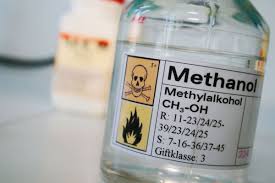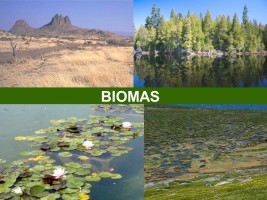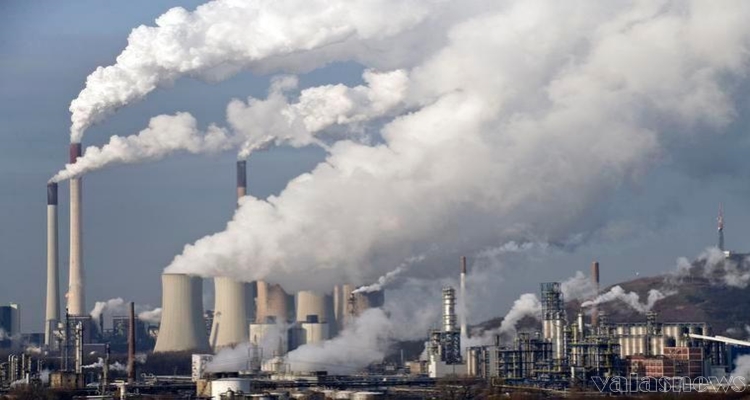
Methanol
How to obtained Methanol
From Biomass Raw Materials

Biological Process (Fermentation)
Before forming methanol, in the anaerobic process the biomass feedstock will be degraded into methane and carbon dioxide through stages which are a series of metabolic activities of different groups of microorganisms. In this process is divided into 4 stages, namely:
1.Hydrolysis and acidification
At this stage, the fermentative bacteria will hydrolyze the polymer substrate such as polysaccharides, proteins, and fats into sugar monomers, amino acids, and peptides.
2.Asidogenesis
While at this stage, the hydrolysis results from the previous stage will be fermented into volatile fatty acids (acetic acid, butyric acid, and propionate), long chain fatty acids CO2, format, NH4+, HS-, H2, alcohol.
3.Asetogenesis
Furthermore, proton-reducing acetogenic bacteria will decompose propionate, long chain fatty acids, alcohols, some amino acids and aromatic compounds into H2,formats and acetates.
4.Metanogenesis
In this final step involves 2 different methanogen groups namely, hydrogenotropic methanogens using H2 and the format of the previous reaction to reduce CO2 to CH4 and acetylropic methanogens that break down acetates into CO2 and CH4.
Methanol Synthesis Process
In this process using Cu-ZnO catalyst. This catalyst has a very high activity so high reaction speed at relatively low temperature 2250C. The catalyst used in this methanol refinery should have a high selectivity of methanol synthesis to minimize the amount of by-product produced. After this process is exceeded, the output gas from the methanol synthesis reaction is cooled from 2250C become 400 0C. This cooling aims to separate the crude methanol from the dissolved gas there in
Methanol Purification Process
An increase in operating pressure will cause the increase of dissolved gas in the liquid. For that reason, it is necessary to decrease the pressure to let the gases dissolve. While volatile impurities such as dimethyl ether, methyl formate, and dissolved inert gases are separated from raw methanol. After that, the crude methanol is purified at 800C and 1.5 bar. In this purification column, methanol will be the top product and water will be the bottom product. The process water produced as the below product will be pumped towards the process water heater. The vapor leading to the top of the distillation column will be cooled by a condenser wherein the methanol vapor will be condensed in total to a liquid of temperature 690C. The condensed methanol was further cooled to a temperature of 40 0C and accommodated

Making Methanol from natural gas synthesis
The reaction of making methanol with natural gas synthesis is as follows:
CH4 + H2 <----> 3 H2 + CO
CO+2 H2<----> CH3OH
CO2 + 3 H2 <---->CH3OH+ H2O
Racun H2S on Natural Gas was captured with ZnO catalyst, and the RSH toxin was caught with the catalyst CoMo.
In summary, the methanol synthesis process stages are as follows:
Prereform: natural gas reacted with superheated steam, reaction
CnH2n+2+ n H2O <----> CO + (2n+1)H2 -Q
CO+ 3H2 <----> CH4+ H2O +Q
CO + H2O <----> CO2 + H2+ Q
Reforming : change CH4 to CO dan H2 with the help of steam, reaction CH4 + H2O<---->3H2 + CO-Q
Autotermal: changing the remains of CH4 with steam and O2where the partial and perfect reactions take place at once, the reaction
2 CnH2n+2 + (3+1n)O2 <----> 2nCO2 + (2n+2)H2O+Q
2 CnH2n+2 + 3nO2 <----> 2CnCO+ 2H2+ 4nH2O+Q
CH4 + 2O2<----> CO2 + 2H2+ Q
CH4 + O2<----> CO + H2+ H2O+Q
Sintesis: gas-gas CO, CO2, dan H2lalu disintesis dalam reaktor dengan katalis Cu
Distillation : the result of gas synthesis in the pure reactor unit is still about 70%, then the final stage is distillation to get high purity methanol